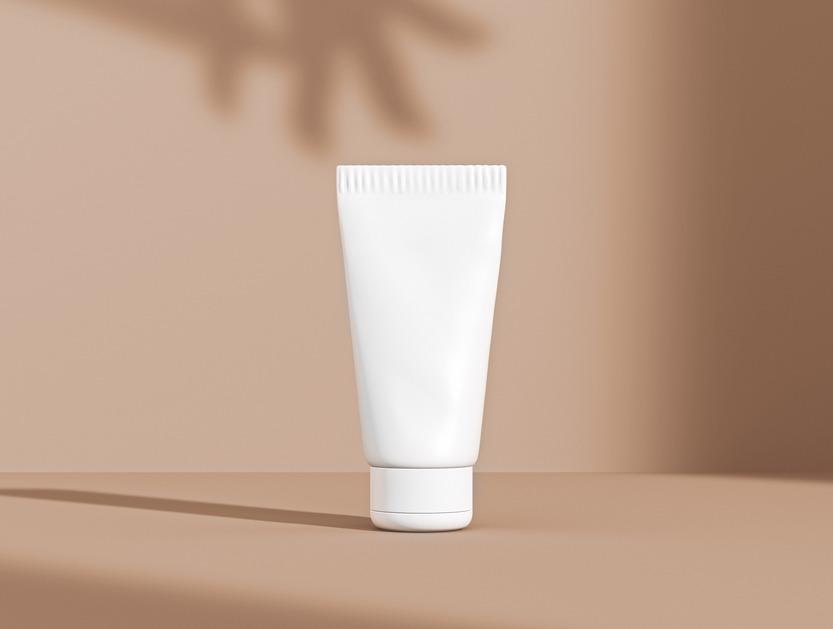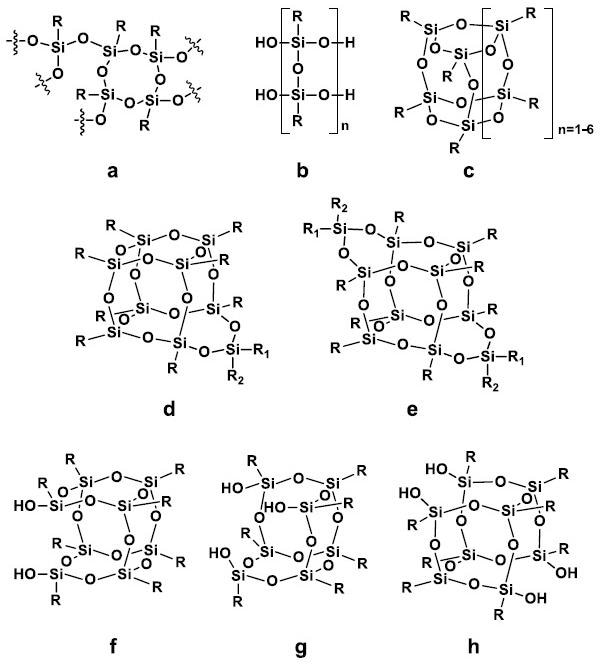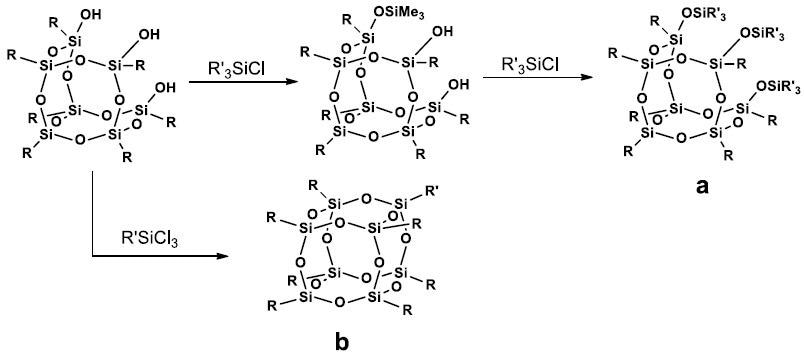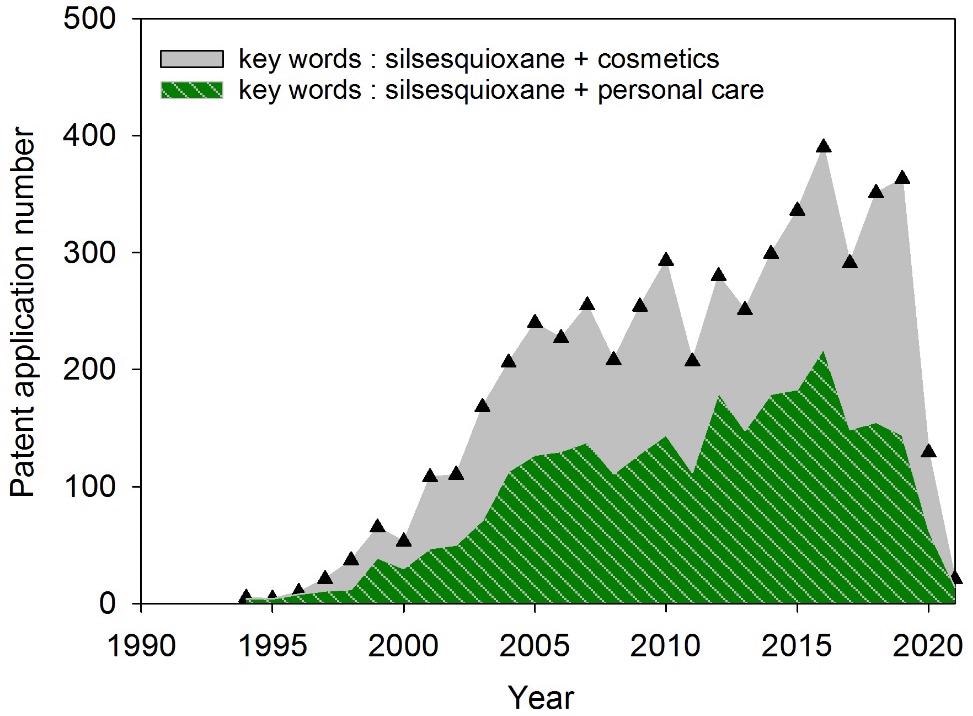In an article recently published in the journal Materials, researchers reviewed literature and patents on the use of polyhedral oligosilsesquioxanes (POSS/SSQs) and their derivatives as constituents in the cosmetics industry. The review also discussed the strategies for producing these chemicals.

Study: Silsesquioxanes in the Cosmetics Industry—Applications and Perspectives. Image Credit: Vladimir Zotov/Shutterstock.com
Background
The growing demand for creative and efficient personal care products is prompting manufacturers to develop new formulas that will meet the needs of their clients. When producing new cosmetic products, various factors should be considered, including appearance, rheology, consistency, ease of removal, and functioning. Over the years, silicones have garnered tremendous attention in modern cosmetics due to their varying solubility and distinct properties.

General scheme of different silsesquioxane categories: (a) random (T-resin, polysilsesquioxane); (b) ladder; (c) cage T series; (d) homosilsesquioxane; (e) double-decker; (f) disilanol; (g) trisilanol; (h) tetrasilanol. Image Credit: Olejnik, A et al., Materials
Among various silicones, silsesquioxanes have gained popularity in the cosmetics sector in recent years. These chemicals have been proposed for use as emollients, dispersants, and viscosity modifiers in new cosmetic formulations. A specific POSS present in a formulation could provide solubility or compatibility benefits.
However, there are sparse reports available in the literature that discuss the utility of POSS derivatives in cosmetics. Also, a thorough examination of patents related to the use of silsesquioxanes in cosmetic formulations is still lacking.
About the Study
In the present study, researchers investigated the macromolecular and molecular structures of various POSS derivatives and their polymeric hybrids. Following a brief overview of the POSS structure and nomenclature, numerous techniques for the synthesis of silsesquioxanes, such as hydrolytic (oligo)condensation and corner capping, were discussed. Further, the preparation of silsesquioxane resins/polysilsesquioxanes through strong acid or base-catalyzed hydrolysis and polycondensation of alkoxysilanes was elucidated.
Also, post-functionalization of POSS cage via catalytic and non-catalytic modifications of silsesquioxanes systems was illustrated.
A thorough literature review was carried out to analyze the patents applications pertaining to the use of silsesquioxanes in cosmetics and personal care formulations. The significance of silsesquioxanes as an ingredient in cosmetic products was assessed. The multitude of applications and multifunctionality of POSS chemical compounds were explored.
Various silsesquioxane derivatives dedicated to personal care were presented as examples. The applications of POSS derivatives in color cosmetics, nail care, hair care, and skin care products were also demonstrated. Furthermore, future prospects of polysilsesquioxanes and their derivatives in the cosmetic industry were discussed.

A procedure of corner capping of open-cage silsesquioxane trisilanol; (a)—a product of silanol groups capping with monochlorosilanes; (b)—a cage T8 product of actual corner capping with trichlorosilane. Image Credit: Olejnik, A et al., Materials
Observations
In this review, the researchers observed that polysilisesquioxanes and polysilsesquioxane resins were the most common structural forms in the patent applications related to the field of silsesquioxanes/cosmetics and silsesquioxanes/personal care for the year 1990-2021. In cosmetic compositions, these forms were far more prevalent than the structurally pure polyhedral forms.
Discoveries subjected to intellectual property protection in the prominent international markets from 2000 to 2020 were spearheaded by L'Oréal (almost 30% of all the patent applications). Kose Corp. was in second position with over 8%, followed by Henkel with 4% and The Procter & Gamble Company with 3%. Japanese companies such as Shiseido Nippon Fine Chemical, Kao, and Sinopec also used SSQ.
The increase in the number of patent applications was linear and did not exceed 10–20% on an annual basis between 2005 and 2020. The epidemic's impact on the drop in the number of reports in 2020–2021 was also visible.
According to detailed analyses of the content of the applications, silsesquioxanes appear to play a similar role to functional polysiloxanes; however, they differ from the polysiloxane analogs due to the higher equivalent of functional groups per mass unit and the condensed, non-linear nature of their structure.
Further, based on the detailed review of many studies, polysilsesquioxanes and their various hybrids, such as polysilsesquioxane-siloxane resins or copolymers, were found to be an acceptable choice for both cost-effective and high-performing cosmetic formulations.

Several patent applications in the field of silsesquioxanes/cosmetics and silsesquioxanes/ personal care (based on Google Patents database). Image Credit: Olejnik, A et al., Materials
Conclusions
In conclusion, this review elucidates the usage of silsesquioxanes in cosmetics which was first reported in the late 1960s and early 1970s. However, the cosmetic industry did not see a boom until the mid-1990s, and the boom was caused by the rapid growth and increase in the significance of cosmetics in the global market.
The boom was also attributed to the extensive research on the influence of SSQs on complex systems comprising water-based media, emulsions, polymers, and other materials, which led to their widespread use of SSQs. The economic factors and quick advancements in this field facilitated the use of this group of chemicals in the cosmetics/personal care industry.
Overall, this review emphasizes that polysilsesquioxanes structures have a substantial benefit in practical applications, as evidenced by various studies and patents that provide the data on a variety of characteristics including film and color stability, UV protection, coating strength, and more.
This could be attributed to the significant difference between the manufacturing cost of disordered structures and molecular molecules. The authors believe that modeling functional characteristics, minimizing production costs, and developing multifunctional polysilsesquioxanes are the objectives for future research on the utilization of silsesquioxanes in the cosmetics sector.
Disclaimer: The views expressed here are those of the author expressed in their private capacity and do not necessarily represent the views of AZoM.com Limited T/A AZoNetwork the owner and operator of this website. This disclaimer forms part of the Terms and conditions of use of this website.
Source:
Olejnik, A., Sztorch, B., Brzakalski, D. et al. Silsesquioxanes in the Cosmetics Industry—Applications and Perspectives. Materials 15(3), 1126 (2022). https://www.mdpi.com/1996-1944/15/3/1126